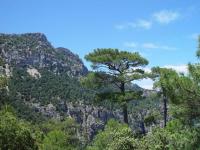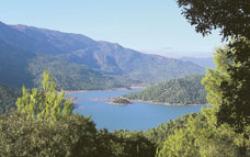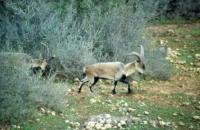
Nature Park Sierras de Cazorla, Segura y las Villas
With its 210.000 hectares, the Sierras de Cazorla, Segura and las Villas Natural Park is one of the largest Natural Parks in Spain. It is also a Biosphere Reserve, aNational Hunting Reserve and a Zone of Special Protection for Birds as well as the most visited Park due to its great natural, cynegetic, cultural and historical importance.
With its rugged relief and heights of over 2,000 metres, Empanadas (2.106 m), La Cabrilla (2.032 m) and Cabañas (2.028 m), the Park is a succession of mountains, ravines, valleys, calares and flat lands. Its mountains are the birthplace of theSegura and Guadalquivir rivers.
During the 18th century, its forests were used to build a large number of the ships in the Spanish fleet, and an Admiralty being established here.
Fauna:
With regard to wildlife, among its 36 mammal species, we must point out the Spanish Ibex and some others, such as the deer, the fallow deer and the Ovis musimon. Otters, genets, stone martens and foxes stand out among the carnivores. Also wild boars, polecats, badgers and squirrels. The segureño wolf became extinct in the 1930's.

Among the birds, we have to highlight the golden eagle and the aguila perdicera (Hieraetus fasciatus), vultures, kites, egyptian vultures, owls, barn owls, tawny owls, kingfishers and blackbirds.
A small reptile lives between the cracks in the rocks: the wall lizard of Valverde, discovered in 1958 , a species that can only be found in this area. There are unique insects. It has a great variety of fish: common and rainbow trout, barbels and bogas (Boops boops) are incentives for anyone who enjoys fishing.
Flora:
This Natural Park contains some of the richest vegetation in the whole of the Mediterranean basin. Of the more than 1,300 species catalogued, 24 belong exclusively to this area. Madrona, lentisk, wild jasmin o sarsaparrilla. Gall oaks, servales and box; maple forests, melojares (groves of Quercus Pirenaica) and hazel woods.
 To be highlighted, Ilex aquifolium, Tussilago farfara, Viburnum opalus, Astragalus glyciphylos, Hepatica nobilis. Pine forests, both indigenous and sub-spontaneous or repopulated, are frequent. Also salgareño pines, junipers and sabinas rastreras (Juniperus Sabina), next to fields of thyme. The unfavourable weather conditions (snow in winter, stifling heat in summer, wind, lack of soil, etc) allow the presence of species of high ecological value, amongst which, numerous exclusive endemic species must be mentioned: Geranium cazorlense, Hormatophylla baetica, Aquilegia cazorlensis, Erodium cazorlanum, etc., some of them endangered.
To be highlighted, Ilex aquifolium, Tussilago farfara, Viburnum opalus, Astragalus glyciphylos, Hepatica nobilis. Pine forests, both indigenous and sub-spontaneous or repopulated, are frequent. Also salgareño pines, junipers and sabinas rastreras (Juniperus Sabina), next to fields of thyme. The unfavourable weather conditions (snow in winter, stifling heat in summer, wind, lack of soil, etc) allow the presence of species of high ecological value, amongst which, numerous exclusive endemic species must be mentioned: Geranium cazorlense, Hormatophylla baetica, Aquilegia cazorlensis, Erodium cazorlanum, etc., some of them endangered.
Among the great variety of flowers in the area we must point out the existence of more than a hundred endemic species from Andalusia and the surrounding mountains, among which we have to highlight the "Cazorla violet" (Viola cazorlensis) and the "Venus's fly-trap" (Pinguicula vallisnerifolia), for their beauty and

ecological importance. In theBotanic Garden of Torre del Vinagre, next to the Reception and Interpretation Centre, most of the trees in the park are displayed, grouped by associations and distributed in height levels.
BIBLIOGRAFÍA:
Mapa y guia excursionista de la Sierra de Segura. Edt. Alpina.
Mapa y guia excursionista de la Sierra de Cazorla. Edt. Alpina.
Ecoguia de Sierras de Cazorla, Segura y las Villas. Anaya Touring Club.
El Parque Natural de Cazorla, Segura y las Villas. Edt. Everest.
Guia Verde del Parque Natural de Cazorla, Segura y las Villas. Edt. Susaeta.
Narraciones de caza mayor en Sierras de Cazorla, Segura y las Villas. Edt. El Olivo.
La Vida Tradicional de la Sierra de Segura. Edt. J. Noticias, S.L.
En la cocina de la Sierra de Segura. Edt. J. Noticias, S.L.





